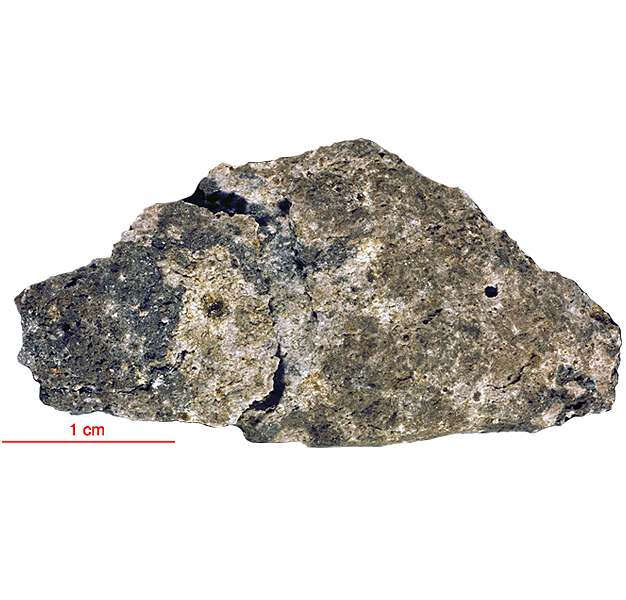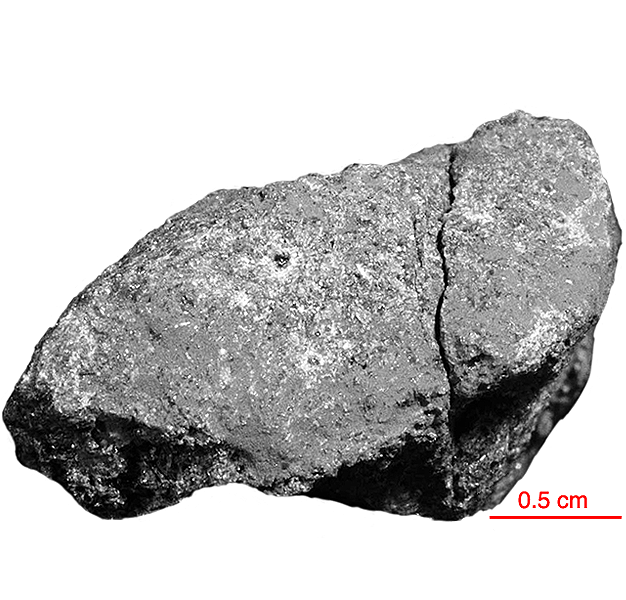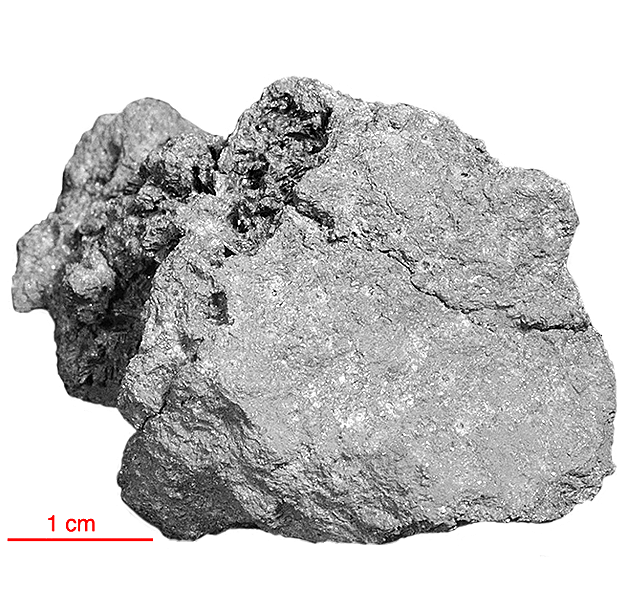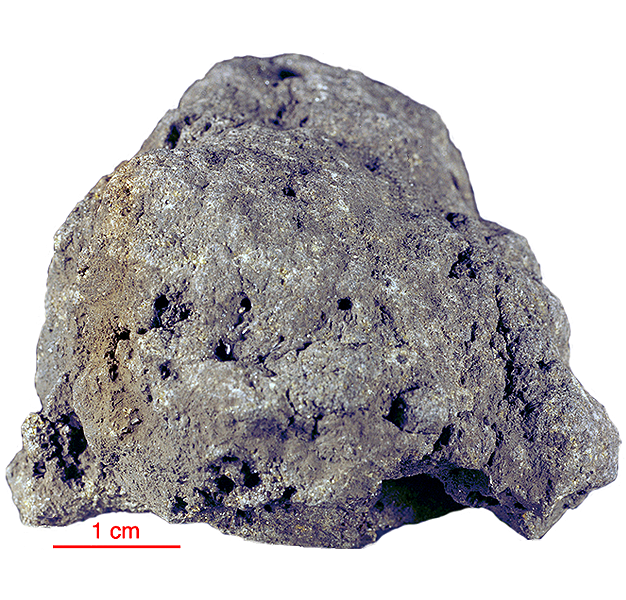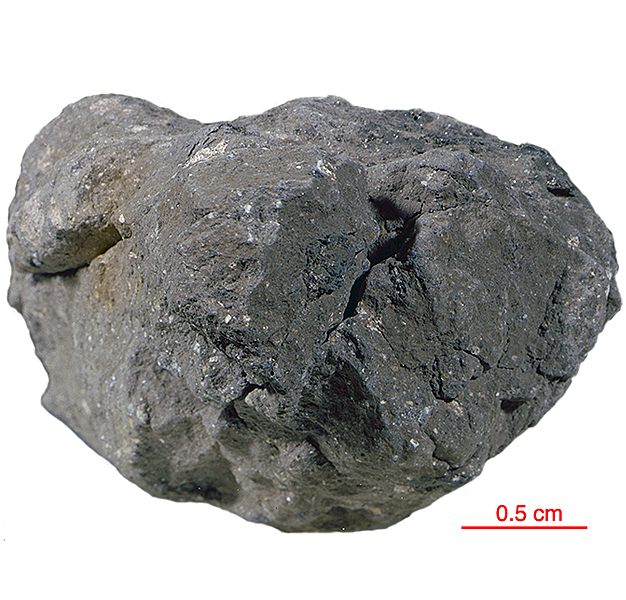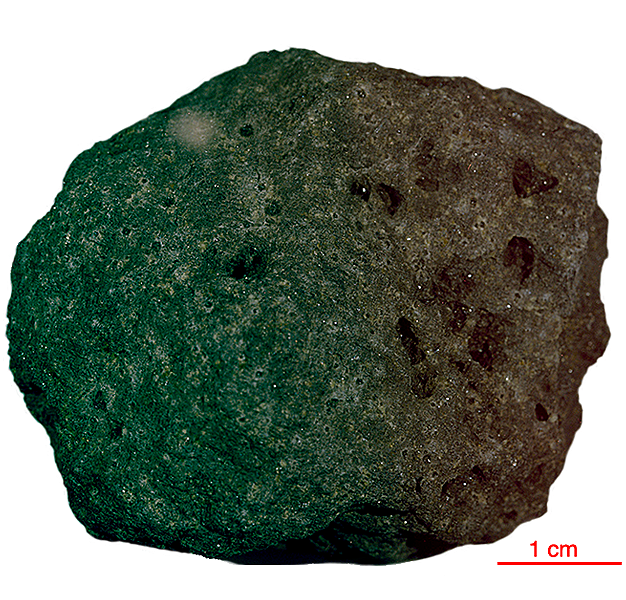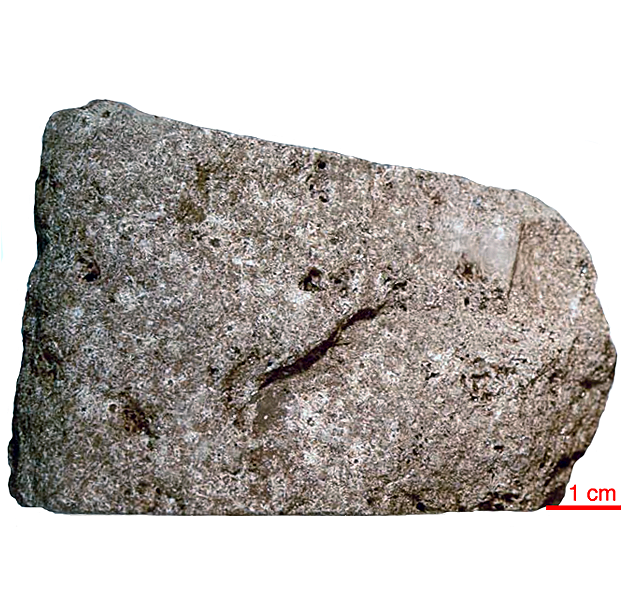
Fact sheet
Lunar basalt 12038 is distinctly different from the other Apollo 12 basalts. It has more feldspar, higher sodium and aluminium, higher REE and is characterized by a distinct isotopic composition. The texture of 12038 is hypidiomorphic and dominantly equigranular (~0.6 mm). Plagioclase laths form a loose, randomly oriented network in which pyroxene is either interstitial or partially enclosed. Also present is acicular ilmenite, interstitial cristobalite, trace Ca-phosphate, fayalite, ulvöspinel, K-feldspar, troilite, K-glass and metallic iron. It also contains a few % vesicles.
The sample weighed 746 grams before analysis and is 3.35±0.09 billion years old (Rb/Sr).
Further details of this and other Apollo samples are here: http://curator.jsc.nasa.gov/lunar/
Apollo 12 returned 34 kilograms of samples, including 45 rocks, samples of lunar 'soil', and several core tubes that included material from as much as 40 centimetres below the lunar surface.
Apollo 12 rocks were almost all basalts, with only two breccias in the returned samples. The basalts at the Apollo 12 site formed 3.1 to 3.3 billion years ago, roughly 500 million years later than the Apollo 11 basalts. Overall, there is much less of the element titanium in the Apollo 12 samples than in the Apollo 11 samples, which explains the more reddish colour of this region. The differences in age and chemical composition between the Apollo 11 and Apollo 12 samples demonstrate that mare volcanism did not occur as a single, Moon-wide melting event.
Apollo 12 was launched on 14 November 1969.

